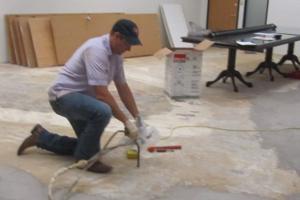Effective Strategies for Detecting Water Leaks Under Concrete Slabs

-
Quick Links:
- 1. Understanding Water Leaks Under Concrete
- 2. Common Causes of Water Leaks
- 3. Signs of a Water Leak
- 4. Tools for Detecting Water Leaks
- 5. Step-by-Step Guide to Detecting a Water Leak
- 6. Professional Leak Detection Services
- 7. Case Studies and Real-World Examples
- 8. Preventative Measures
- 9. FAQs
1. Understanding Water Leaks Under Concrete
Water leaks under concrete slabs can lead to significant damage, including foundation issues, mold growth, and increased water bills. Understanding how these leaks occur is the first step in effective detection and prevention.
2. Common Causes of Water Leaks
Several factors contribute to water leaks under concrete:
- Age of Plumbing: Older pipes are more prone to corrosion and leaks.
- Ground Movement: Shifts in the ground can cause cracks in pipes.
- Improper Installation: Poorly installed plumbing systems can lead to leaks over time.
- Tree Roots: Roots can invade and damage pipes.
3. Signs of a Water Leak
Identifying the signs of a water leak is crucial for early detection. Look out for:
- Unexplained increase in water bills.
- Wet patches or discoloration on floors.
- Cracks in the concrete slab.
- Musty odors indicating mold growth.
4. Tools for Detecting Water Leaks
Using the right tools can make the detection process easier. Here are some essential tools:
- Moisture Meter: Measures moisture levels in concrete.
- Infrared Thermometer: Detects temperature differences indicating moisture.
- Acoustic Listening Devices: Amplifies the sound of leaks.
- CCTV Inspection Cameras: Allows for visual inspection of pipes.
5. Step-by-Step Guide to Detecting a Water Leak
Follow these steps for an effective leak detection process:
- Inspect the Area: Look for visible signs of moisture and damage.
- Check Water Meter: Monitor the water meter for irregularities.
- Use a Moisture Meter: Test various areas of the concrete slab.
- Thermal Imaging: Use an infrared camera to detect temperature changes.
- Professional Help: If necessary, call in leak detection specialists.
6. Professional Leak Detection Services
Sometimes, the best option is to hire professionals. They use advanced technology and have the expertise to accurately detect leaks without causing damage to your property. Consider these factors when choosing a service:
- Experience and qualifications.
- Technology used.
- Customer reviews and testimonials.
7. Case Studies and Real-World Examples
Understanding real-life situations can provide valuable insights:
Case Study 1: Residential Leak Detection
A homeowner noticed high water bills and damp spots on the floor. A professional leak detection service used thermal imaging and found a leak under the concrete slab, leading to a quick and effective repair.
Case Study 2: Commercial Building Leak
In a commercial property, unexplained moisture led to mold growth. A detailed inspection revealed a significant leak in the plumbing system, which was promptly addressed, saving the property owner from costly repairs.
8. Preventative Measures
Taking steps to prevent leaks can save time and money:
- Regular plumbing inspections.
- Monitor water bills for unusual spikes.
- Install a sump pump in prone areas.
- Proper landscaping to divert water away from foundations.
FAQs
1. How can I tell if I have a water leak under my concrete slab?
Look for damp spots, cracks, or an increase in your water bill.
2. What tools do I need for detecting a water leak?
A moisture meter, infrared thermometer, and acoustic listening devices are helpful.
3. Can I detect a water leak without professional help?
Yes, you can perform initial checks, but professional services provide more accurate results.
4. What are the consequences of a water leak under concrete?
Leads to mold, structural damage, and increased water bills.
5. How often should I check for leaks?
Regular inspections are recommended, especially if you notice any signs of leaks.
6. Are there DIY methods for detecting leaks?
Yes, monitoring your water meter and checking for damp areas can help.
7. What should I do if I find a leak?
Shut off the water supply and contact a professional for repairs.
8. Can tree roots cause leaks in plumbing?
Yes, tree roots can invade pipes and cause breaks.
9. How much does professional leak detection cost?
Costs vary, but expect to pay between $200 to $500 depending on the complexity.
10. What are some long-term solutions to prevent leaks?
Regular maintenance, proper installation, and monitoring can help prevent leaks.
Random Reads
- Easy steps add header footer powerpoint
- Easy money skyrim
- How to turn off voiceover iphone
- How to turn off mac filtering
- How to remove stuck document from windows printer queue
- How to connect to proxy server
- Unlock sim card without puk code
- How to stream amazon prime on discord
- How to stream disney plus on discord
- Debug dead motherboard